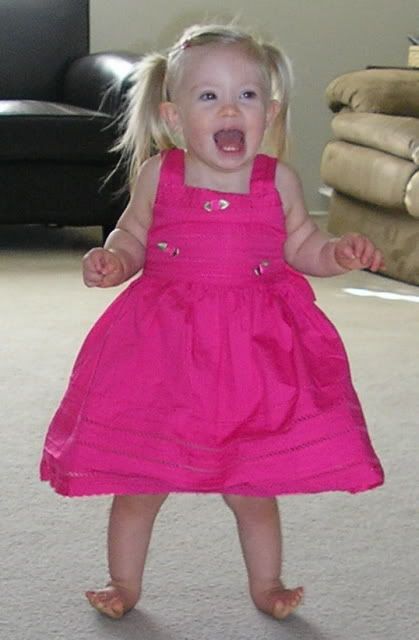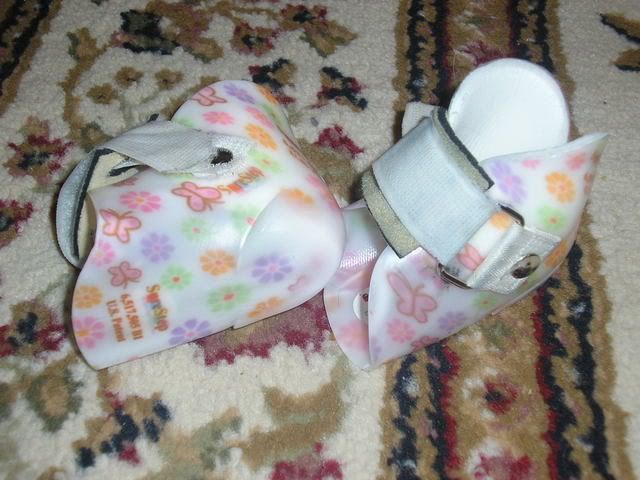Homeschooling Your Preschooler with Special Needs
 My husband and I recently had an unfortunate incident at Darah’s preschool. It’s a long story (and not the reason I’m writing this), but basically we decided we weren’t comfortable with having her go back to the same school. When we pulled Darah out of school, my husband and I started really pondering what was best for Darah and her educational needs. An unfortunate experience gave us a great opportunity to reevaluate the decisions we were making and make sure we weren’t just going with the flow, but that we were truly doing the best thing for our daughter. First of all, it must be reminded that Darah is not even four years old yet. We’re not talking about making a decision on what college or high school she attends, we’re talking about preschool. Through a ton of research and even more prayer, we decided that teaching her at home was the best thing for her. Everybody gets that cringe when they hear the word “homeschool.” This decision goes completely against what’s being preached in the special needs circles, because it is the opposite of inclusion. Darah is trying out another preschool two mornings a week for three hours each morning, but I am just waiting to see how it goes before I commit to that for next year. She will not be attending full time next year, unless I do a complete flip-flop.
My husband and I recently had an unfortunate incident at Darah’s preschool. It’s a long story (and not the reason I’m writing this), but basically we decided we weren’t comfortable with having her go back to the same school. When we pulled Darah out of school, my husband and I started really pondering what was best for Darah and her educational needs. An unfortunate experience gave us a great opportunity to reevaluate the decisions we were making and make sure we weren’t just going with the flow, but that we were truly doing the best thing for our daughter. First of all, it must be reminded that Darah is not even four years old yet. We’re not talking about making a decision on what college or high school she attends, we’re talking about preschool. Through a ton of research and even more prayer, we decided that teaching her at home was the best thing for her. Everybody gets that cringe when they hear the word “homeschool.” This decision goes completely against what’s being preached in the special needs circles, because it is the opposite of inclusion. Darah is trying out another preschool two mornings a week for three hours each morning, but I am just waiting to see how it goes before I commit to that for next year. She will not be attending full time next year, unless I do a complete flip-flop.
I am not saying that this decision is the best decision for every other child. I am saying that this decision has been the best thing for Darah for right now. It is a hard decision because even though I feel like I’m doing the right thing, everyone has an opinion or a story about how homeschooling ruins children and even though I am confident that I know Darah and her needs better than anyone else, I don’t like feeling judged by other people.
During my quest to find the perfect decision for Darah’s education, I became quite intimate with google. I’m a concrete person, so I was looking for concrete answers. Unfortunately, it took some serious digging to find the amazing resources that are out there! I wanted to find an all-encompassing curriculum that told me exactly what to do on each day. The more I started digging, the more I learned that I was actually already doing a lot of the things I needed to be doing with Darah. I am already doing the See-and-Learn reading program that I raved to all of you about in this article. I also was already working on numbers, shapes, and colors with Darah. I was also already “teaching” her in our normal, everyday activities. When her toe comes out of her sandal, I teach her that her toe is “OUT” and needs to go back “IN!” When we outside, I show her the difference between her “LITTLE” toy car and the “BIG” car that drives by. When I give her a bath, we name all of her body parts and count her way-too-cute toes. These are all foundational concepts that are usually taught to preschoolers. I know that Darah is learning by living and I do not take that type of learning for granted because it is the main way all kids learn-through experiences. However, I am the type of person who needs a little more direction. I am goal driven and a list maker and need to know that these are priority numbers one, two and three. I want to feel like I know what I’m doing even if we’re very laid back in our approach to learning. I found some amazing resources that I would like to share with you if you are considering to teach your child at home. My philosophy is every parent is “homeschooling” their child in some fashion. Even if they are sending their child to traditional school, they are still working on homework after school, answering the million and one “why” questions, and teaching their children through everyday experiences. (more…)
Share the fun: Email + Del.icio.us + Digg + Technorati








